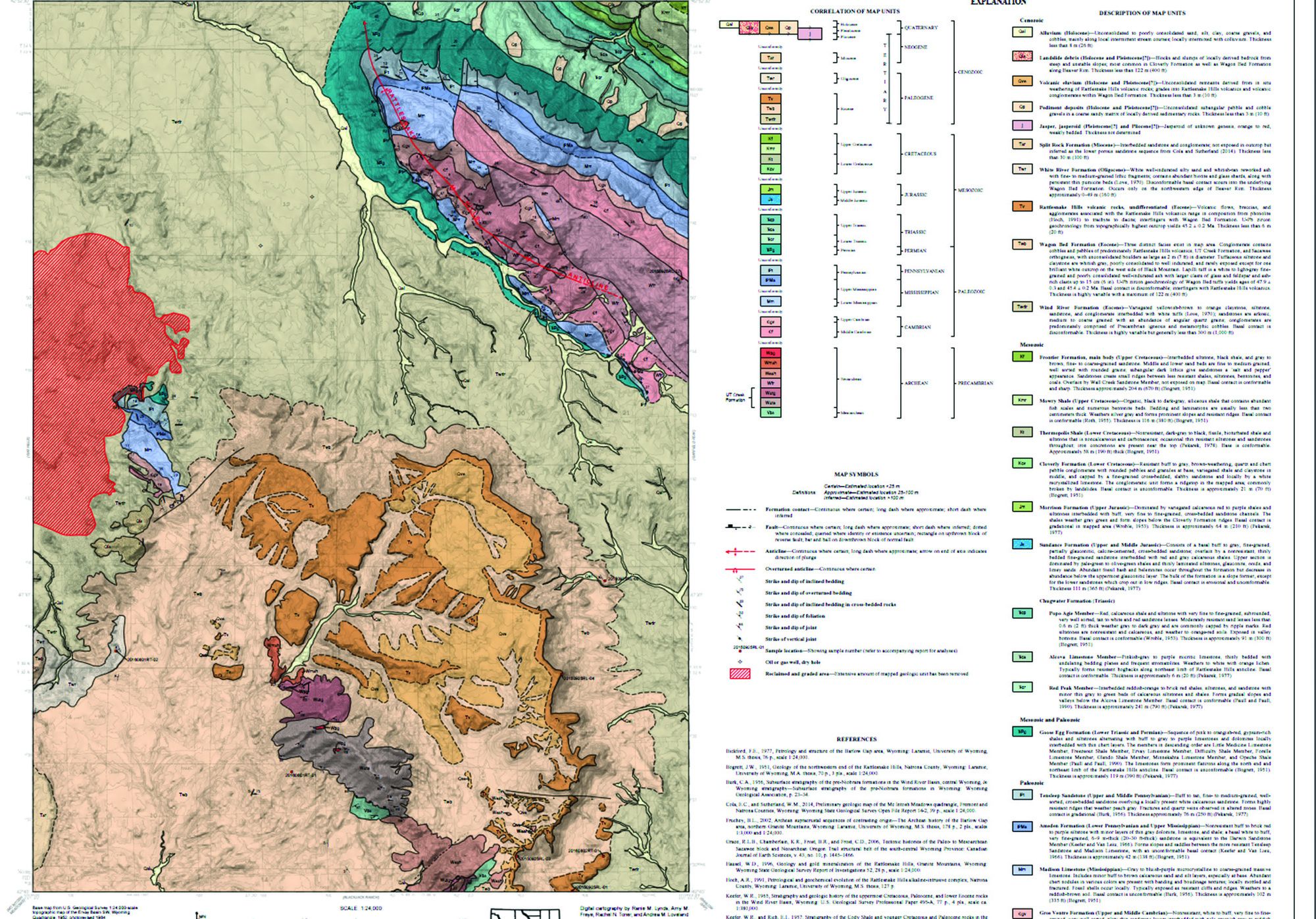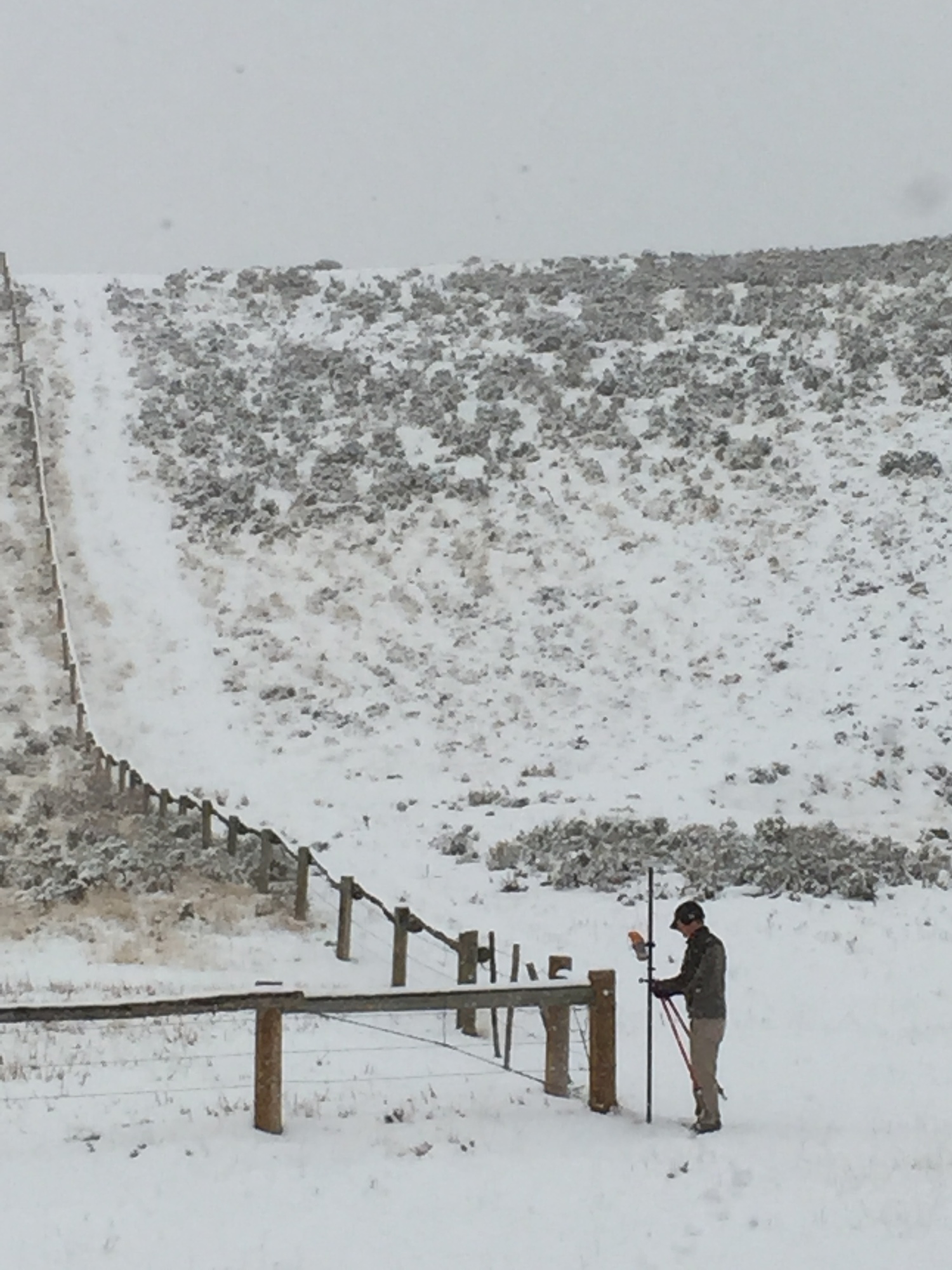NEWS RELEASE: Wyoming Geological Survey Publishes 5 New Geologic Maps
Wyoming State Geological Survey sent this bulletin at 09/23/2016 11:34 AM MDT |
|
Having trouble viewing this email? View it as a Web page. |
Sept. 23, 2016
******FOR IMMEDIATE RELEASE******
Media Contact:
Christina George
(307) 766-2286 x231
christina.george@wyo.gov

The WSGS Releases 5 New Geologic Maps
The Wyoming State Geological Survey (WSGS) has published five new maps under its StateMap program depicting energy systems, geologic hazards and general geology of Wyoming.
- 1:24,000-scale preliminary bedrock geologic map of the Ervay Basin 7.5’ quadrangle (Open File Report 16-03, Natrona County)
- 1:24,000-scale preliminary bedrock geologic map of the Ervay Basin SW 7.5’ quadrangle (Open File Report 16-04, Natrona County)
- 1:24,000-scale preliminary bedrock geology map of the Dixon 7.5’ quadrangle (Open File Report 16-05, Carbon County, Wyoming; Moffat County, Colorado)
- 1:100,000-scale preliminary surficial geologic map of the Jackson 30’ x 60’ quadrangle (Open File Report 16-06, Sublette, Lincoln, Teton and Fremont counties)
- 1:24,000-scale preliminary bedrock geologic map of the Jeffrey City 7.5’ quadrangle (Open File Report 16-07, Fremont County)
“The StateMap program benefits the state of Wyoming by allowing the WSGS to do field work and mapping in support of larger initiatives that are focused on evaluating mineral, oil and gas, as well as other resources,” says Tom Drean, WSGS director. “It also helps with the understanding and identification of geologic hazards, surface conditions and regional geologic frameworks.”
A dozen WSGS geologists worked several months on the mapping projects, including spending a combined 167 days in the field. The scientists conducted on-the-ground examination and measurement of rock units, interpreted aerial imagery, and compiled previous maps and written reports.
The information was collected in a Geographic Information System (GIS) that combines the digital base map of the region and geologic data from the field. Final steps included map layout and design by the geologists and GIS department staff. Draft maps then underwent an internal peer review, with editing by Suzanne Luhr, WSGS map editor.
A collaborative project produced two adjacent maps of the Ervay Basin and Ervay Basin SW quadrangles (principal investigators Rachel Toner and Dr. Ranie Lynds, respectively). Together, the mapped areas include rock outcrops spanning more than 2.8 billion years of time. The most prominent structural feature on the maps is the northwest-plunging Rattlesnake Hills anticline formed during a period of mountain building called the Laramide orogeny.
“The goal of the Ervay Basin mapping project was to map the north end of the Rattlesnake Hills anticline to better understand the complex folding and faulting on the southern edge of the Wind River Basin,” says Lynds. “A secondary goal was to unravel the interfingering relationship between several similar-looking young basin-filling and ash-rich formations in outcrop.”
The Dixon quadrangle project continued mapping knowledge of the Paleocene Fort Union and Upper Cretaceous Lance formations along the Little Snake River coal field.
“Mapping discoveries at this scale included a division of Pleistocene-age terrace gravels into four units stemming from the ancestral Little Snake River, a new extent of the Browns Park Formation and new sampling of coal beds in the Fort Union Formation,” says principal investigator, Christopher Carroll.
The Jackson quadrangle project involved field checking previously mapped landslides, mapping new landslides, and gathering preliminary data and scarp mapping on the Eastern Gros Ventre, Greys River, Grand Valley, Hoback and Phillips Valley faults. Mapping of the area found 24 potential unmapped landslides, most notably in Noble Basin near Bondurant. The map and associated data will assist with geologic hazard assessments, groundwater aquifer modeling and other investigations.
“Our goal for this surficial geology map was to produce new data relating to the surficial geology, including landslides and Quaternary-aged faults in the Jackson quadrangle,” says principal investigator, Seth Wittke.
The Jeffrey City quadrangle map provides accurate locations of geologic contacts, structures and faults, as well as additional clarification of the relationships between Tertiary units (younger than 65 million years) in the vicinity of the South Granite Mountains Fault System.
“Our experiences with these units in similar settings elsewhere in the greater Granite Mountains vicinity has helped further our understanding of the geology within the map area,” says principal investigator, Robert Gregory.
The Ervay Basin SW, Dixon and Jeffrey City maps are accompanied by a written report covering the geologic setting, structure and economics of the quadrangles, as well as laboratory results.
The WSGS received funding for the projects through the U.S. National Cooperative Geologic Mapping Program managed by the U.S. Geological Survey.
Geology mapping is a critical area focused on by the WSGS, which has participated in the StateMap Program (historically CoGeomap) since 1985. With the completion of this year’s projects, the WSGS has produced 25 geologic maps at 1:24,000 scale and 75 geologic maps at 1:100,000 scale.
New StateMap projects under development are preliminary bedrock geologic maps of the Bridger Pass 7.5’ and Fort Steele 7.5’ quadrangles (Carbon County), and a preliminary surficial geologic map of the Muddy Gap area (Fremont and Carbon counties).
More information about geologic mapping can be found on the WSGS website.
Caption for photo below: WSGS Geologist Jacob Carnes surveys on the Dixon quadrangle last November.


